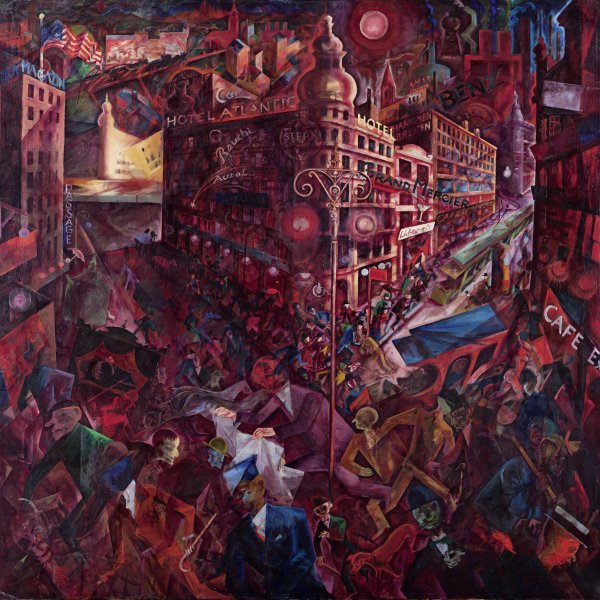Der Stammtisch
The present watercolour belongs to a set of works on paper executed before Grosz fled Germany. During this period the painter had to endure yet another (the third) lengthy trial on charges of blasphemy on account of the prints from the Hintergrund (Backdrop) portfolio, which contained his highly critical drawings made for the film projected on the backdrop of the set for the performance of Jaroslav Hasek’s play The Good Soldier Schwejk (1928).
Although the work was acquired by Baron Thyssen-Bornemisza in 1979 as Political Conversation and has sometimes also been published as German Café, Peter Vergo rightly prefers to call it Der Stammtisch after the inscription on the small flag in the centre of the composition, the term used in German to denote a table in a restaurant or café that is reserved for a particular group of people who meet regularly to discuss politics or topical issues.
The composition features three male figures placidly drinking and smoking around a table in a café. The bitingly critical tone of the image stems from Grosz’s particular dislike of certain political and literary gatherings, as may be inferred from the letter he wrote to his friend Otto Schmalhausen from the Baltic region: “We keep as much distance as possible between us and the literary cliques. There’s no point here in going through the same hot air and critical executions, still less in setting them up myself.” With his mastery at capturing café life, which he depicted in hundreds of sketchbooks, albums of prints and canvases, with his particular caricature-like exaggeration, Grosz “does not intend, ” as Valeriano Bozal has recently pointed out, “to describe moods, but to provoke them.”
Paloma Alarcó









